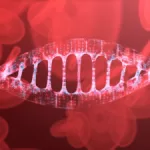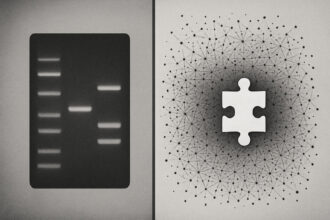Introduction
Understanding how DNA DNA, or Deoxyribonucleic Acid, is the genetic material found in cells, composed of a double helix structure. It serves as the genetic blueprint for all living organisms. Read Full Definition is preserved in human teeth is critical for advancing genetic analysis in archaeological and forensic contexts. A recent study by Tamara Leskovar and Irena Zupaniá Pajniá, published inô Forensic Science
DNA, or Deoxyribonucleic Acid, is the genetic material found in cells, composed of a double helix structure. It serves as the genetic blueprint for all living organisms. Read Full Definition is preserved in human teeth is critical for advancing genetic analysis in archaeological and forensic contexts. A recent study by Tamara Leskovar and Irena Zupaniá Pajniá, published inô Forensic Science Discover the fascinating field of Forensic Science, the application of scientific principles to legal matters. This post delves into its many disciplines, from DNA analysis to crime scene investigation, its importance in the justice system, Read Full Definition International, investigates DNA preservation in various categories of teethãpermanent and deciduous, fully developed and not fully developedãacross adults and non-adults. The findings shed light on the significance of tooth type and age in optimizing sampling strategies and improving success rates for genetic analyses.
Discover the fascinating field of Forensic Science, the application of scientific principles to legal matters. This post delves into its many disciplines, from DNA analysis to crime scene investigation, its importance in the justice system, Read Full Definition International, investigates DNA preservation in various categories of teethãpermanent and deciduous, fully developed and not fully developedãacross adults and non-adults. The findings shed light on the significance of tooth type and age in optimizing sampling strategies and improving success rates for genetic analyses.
Key Findings
1. Tooth Type Matters
- Permanent vs. Deciduous Teeth: Permanent teeth consistently yielded higher DNA quantities than deciduous teeth. This difference is primarily attributed to the thicker cementum and fully developed roots in permanent teeth, which harbor richer DNA stores.
- Implications: For challenging archaeological and forensic cases, prioritizing permanent teeth for genetic analysis significantly enhances the likelihood of successful DNA extraction.
2. Age-Related Variations
- Adults vs. Non-Adults: Teeth from adults yielded higher DNA quantities than those from non-adults, even when only fully developed permanent teeth were analyzed. This highlights age-related factors that influence DNA preservation beyond the developmental stage of the tooth.
- Implications: Researchers should consider the donorãs age when selecting teeth for analysis to optimize DNA yield.
3. Tooth Cementum as a DNA Source
- Thick and Durable: Tooth cementumãs thickness and resistance to degradation make it a reliable source of DNA. This component was emphasized as particularly valuable when other parts of the tooth are compromised.
- Implications: Cementum offers a viable alternative for genetic analysis and should be considered a key target in degraded samples.
4. Practical Implications for Research
- Selecting suitable teeth for DNA analysis based on type, age, and cementum characteristics enhances the reliability of genetic data
 Information in analog or digital form that can be transmitted or processed. Read Full Definition retrieval.
Information in analog or digital form that can be transmitted or processed. Read Full Definition retrieval. - These insights guide more informed sampling strategies, particularly in cases involving skeletonized remains or degraded samples.
Methodology
The study analyzed teeth sampled from a modern-era cemetery in Ljubljana, Slovenia. Using a full demineralization protocol for DNA extraction, the researchers applied qPCR techniques for DNA quantification and autosomal STR typing to confirm genetic profiles. This robust methodology ensures the reliability of the findings.
Conclusion
This study underscores the critical role of tooth type, age, and cementum in DNA preservation. Forensic and archaeological researchers are encouraged to prioritize permanent teeth from adults and leverage cementum when designing sampling strategies. This can significantly improve the success rates of genetic analyses in human remains research.
Study Citation
Tamara Leskovar, Irena Zupaniá Pajniá. (2023). Comparative Analysis of DNA Preservation in Permanent and Deciduous Teeth of Adults and Non-Adults: Implications for Archaeological and Forensic Research. [https://doi.org/10.1016/j.forsciint.2023.111882]
License: This research is available under a Creative Commons license. The full text can be accessed here. Please note that contents may be edited for style and length.











